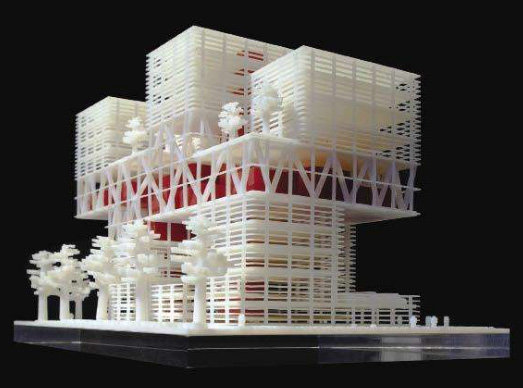The field of architecture is constantly evolving, and 3D printing has emerged as a powerful tool that is transforming the way architects design and construct buildings. With its ability to produce complex geometries and structures quickly and efficiently, 3D printing is revolutionizing architecture and paving the way for a more sustainable and innovative approach to building design.
Benefits of 3D Printing in Architecture
One of the most significant benefits of 3D printing in architecture is the ability to create complex geometries that would be impossible to produce using traditional construction methods. 3D printing allows architects to create organic and fluid shapes that were previously unattainable, opening up new possibilities for innovative and unique designs.
Reduces
In addition, 3D printing can be used to produce building components that are customized to fit a specific building design. This reduces the need for standard-sized building components and allows architects to create unique designs that were previously impossible. For example, 3D printing can be used to produce customized panels, moldings, and other architectural details that are specific to a building design.
Another advantage of 3D printing in architecture is its potential to reduce waste in the construction process. Traditional construction methods often produce a significant amount of waste as materials are cut and shaped to fit a specific design. With 3D printing, building components can be produced with minimal waste, as only the necessary amount of material is used to create the desired shape. This not only reduces waste but also makes the construction process more efficient and cost-effective.
Models
3D printing can also be used to create models of buildings and structures, allowing architects to visualize and test their designs before construction begins. This can help architects identify potential problems and make necessary changes before the building is constructed, saving time and money in the long run.
Applications of 3D Printing in Architecture
3D printing has a wide range of applications in architecture. Some of the most promising applications include:
- Customized building components: 3D printing allows architects to produce unique and customized building components that are specific to a building design, reducing the need for standard-sized components and enabling more complex designs.
- Construction molds: 3D printing can be used to produce molds for construction, allowing architects to create complex shapes and forms that would be difficult or impossible to produce using traditional construction methods.
- Models and prototypes: 3D printing can be used to produce models and prototypes of buildings and structures, allowing architects to test and refine their designs before construction begins.
- Sustainable architecture: 3D printing can be used to produce sustainable and eco-friendly building components, such as walls made from recycled materials or insulation made from plant fibers.
Future of 3D Printing in Architecture
As 3D printing technology continues to improve and new materials are developed, the possibilities for architectural design and construction are expanding. In the future, we may see entire buildings and structures produced using 3D printing technology, as the technology becomes more advanced and cost-effective. This could have significant implications for the field of architecture, allowing architects to create complex and innovative designs that were previously impossible.
3D Printing: reduce wasting in architecture sector
In addition, 3D printing has the potential to revolutionize the construction industry by reducing waste and making the construction process more efficient and cost-effective. With its ability to produce customized building components, 3D printing could also lead to a more sustainable approach to building design and construction.
However, there are also limitations to 3D printing in architecture that must be considered. One of the main limitations is the size of the objects that can be produced using 3D printing technology. While the technology has advanced significantly in recent years, it is still limited in terms of the size of objects that can be produced.
Another limitation is the cost of 3D printing technology, which can be prohibitively expensive for smaller architecture firms. However, as the technology continues to advance and become more widely available, it is likely that the cost will come down, making it more accessible to a wider range of architects and designers.
Last few words
In conclusion, 3D printing technology is transforming the field of architecture by enabling architects to create complex and innovative designs that were previously impossible. With its ability to produce customized building components, 3D printing is paving the way for a more sustainable and efficient approach to building design and construction. As the technology continues to improve and become more widely available, we can expect to see even more exciting applications of 3D printing in architecture in the future.
